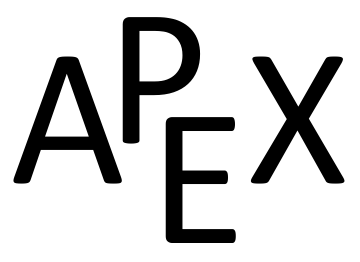The surface
\(\surfaceS\) is piecewise smooth, comprising surfaces
\(\surfaceS_1\text{,}\) which is part of the plane
\(z=2x\text{,}\) surface
\(\surfaceS_2\text{,}\) which is part of the cylinder
\(x=1-y^2\text{,}\) and surface
\(\surfaceS_3\text{,}\) which is part of the plane
\(z=0\text{.}\) To find the total outward flux across
\(\surfaceS\text{,}\) we need to compute the outward flux across each of these three surfaces.
We leave it to the reader to confirm that surfaces \(\surfaceS_1\text{,}\) \(\surfaceS_2\) and \(\surfaceS_3\) can be parametrized by \(\vec r_1\text{,}\) \(\vec r_2\) and \(\vec r_3\) respectively as
\begin{align*}
\vec r_1(u,v) \amp = \la v(1-u^2), u, 2v(1-u^2)\ra,\\
\vec r_2(u,v) \amp = \la (1-u^2), u, 2v(1-u^2)\ra,\\
\vec r_3(u,v) \amp = \la v(1-u^2), u, 0\ra\text{,}
\end{align*}
where \(-1\leq u\leq 1\) and \(0\leq v\leq 1\) for all three functions.
We compute a unit normal vector
\(\vec n\) for each as
\(\frac{\vec r_u\times\vec r_v}{\snorm{\vec r_u\times\vec r_v}}\text{,}\) though recall that as we are integrating
\(\vec F\cdot \vec n\, dS\text{,}\) we actually only use
\(\vec r_u\times\vec r_v\text{.}\) Finally, in previous flux computations, it did not matter which direction
\(\vec n\) pointed as long as we made note of its direction. When using the Divergence Theorem, we need
\(\vec n\) to point to the outside of the closed surface, so in practice this means we’ll either use
\(\vec r_u\times\vec r_v\) or
\(\vec r_v\times\vec r_u\text{,}\) depending on which points outside of the closed surface
\(\surfaceS\text{.}\)
We leave it to the reader to confirm the following cross products and integrations are correct.
For \(\surfaceS_1\text{,}\) we need to use \(\vec r_{1v}\times\vec r_{1u} = \langle 2(u^2-1),0,1-u^2\rangle\text{.}\) (Note the \(z\)-component is nonnegative as \(u\leq 1\text{,}\) therefore this vector always points up, meaning to the outside, of \(\surfaceS\text{.}\)) The flux across \(\surfaceS_1\) is:
\begin{align*}
\text{ Flux across }\surfaceS_1:\, \amp = \iint_{\surfaceS_1} \vec F\cdot \vec n_1\, dS\\
\amp = \int_0^1\int_{-1}^1 \vec F\big(\vec r_1(u,v)\big)\cdot \big(\vec r_{1v}\times\vec r_{1u}\big)\, du\, dv\\
\amp = \int_0^1\int_{-1}^1 \la v(1-u^2)+u, u^2,4v(1-u^2)\ra \cdot \la 2(u^2-1),0,1-u^2\ra\, du\, dv\\
\amp = \int_0^1\int_{-1}^1 \big(2u^4v+2u^3-4u^2v-2u+2v\big)\, du\, dv\\
\amp = \frac{16}{15}\text{.}
\end{align*}
For \(\surfaceS_2\text{,}\) we use \(\vec r_{2u}\times\vec r_{2v} = \langle 2(1-u^2), 4u(1-u^2),0\rangle\text{.}\) (Note the \(x\)-component is always nonnegative, meaning this vector points outside \(\surfaceS\text{.}\)) The flux across \(\surfaceS_2\) is:
\begin{align*}
\text{ Flux across } \surfaceS_2:\, \amp = \iint_{\surfaceS_2} \vec F\cdot \vec n_2\, dS\\
\amp = \int_0^1\int_{-1}^1 \vec F\big(\vec r_2(u,v)\big)\cdot \big(\vec r_{2u}\times\vec r_{2v}\big)\, du\, dv\\
\amp = \int_0^1\int_{-1}^1 \la 1-u^2+u, u^2, 4v(1-u^2)\ra \cdot \la 2(1-u^2), 4u(1-u^2),0\ra\, du\, dv\\
\amp = \int_0^1\int_{-1}^1 \big(4u^5-2u^4-2u^3+4u^2-2u-2\big)\, du\, dv\\
\amp = \frac{32}{15}\text{.}
\end{align*}
For \(\surfaceS_3\text{,}\) we use \(\vec r_{3u}\times\vec r_{3v} = \langle 0,0,u^2-1\rangle\text{.}\) (Note the \(z\)-component is never positive, meaning this vector points down, outside of \(\surfaceS\text{.}\)) The flux across \(\surfaceS_3\) is:
\begin{align*}
\text{ Flux across } \surfaceS_3:\, \amp = \iint_{\surfaceS_3} \vec F\cdot \vec n_3\, dS\\
\amp = \int_0^1\int_{-1}^1 \vec F\big(\vec r_3(u,v)\big)\cdot \big(\vec r_{3u}\times\vec r_{3v}\big)\, du\, dv\\
\amp = \int_0^1\int_{-1}^1 \la v(1-u^2)+u,u^2,0\ra \cdot \la 0,0,u^2-1\ra\, du\, dv\\
\amp = \int_0^1\int_{-1}^1 0\, du\, dv\\
\amp = 0\text{.}
\end{align*}
Thus the total outward flux, measured by surface integrals across all three component surfaces of
\(\surfaceS\text{,}\) is
\(16/15+32/15+0 = 48/15 = 16/5 = 3.2\text{.}\) We now find the total outward flux by integrating
\(\divv \vec F\) over
\(D\text{.}\)
Following the steps outlined in
Section 14.6, we see the bounds of
\(x\text{,}\) \(y\) and
\(z\) can be set as (thinking “surface to surface, curve to curve, point to point”):
\begin{equation*}
0\leq z\leq 2x; 0\leq x\leq 1-y^2; -1\leq y\leq 1\text{.}
\end{equation*}
With \(\divv \vec F = 1+2y+2 = 2y+3\text{,}\) we find the total outward flux of \(\vec F\) over \(\surfaceS\) as:
\begin{equation*}
\text{ Flux = } \iiint_D\divv \vec F\, dV = \int_{-1}^1\int_0^{1-y^2}\int_0^{2x}\big(2y+3\big)\, dz\, dx\, dy = 16/5\text{,}
\end{equation*}
the same result we obtained previously.

